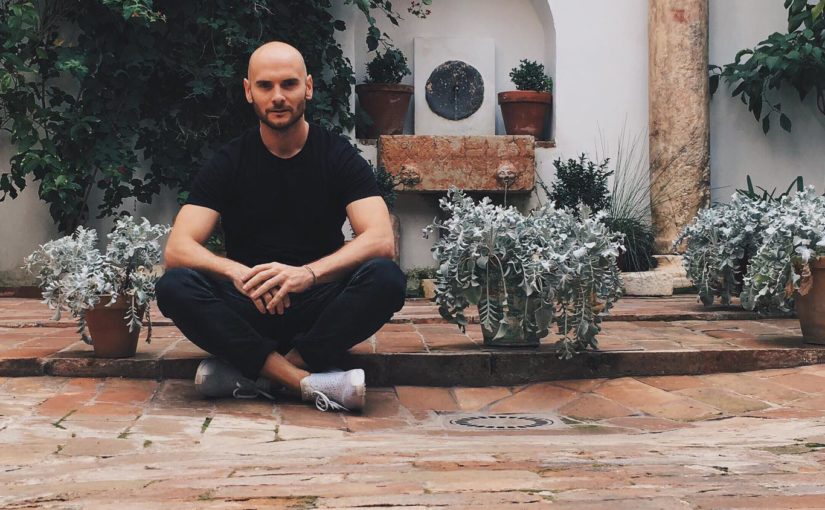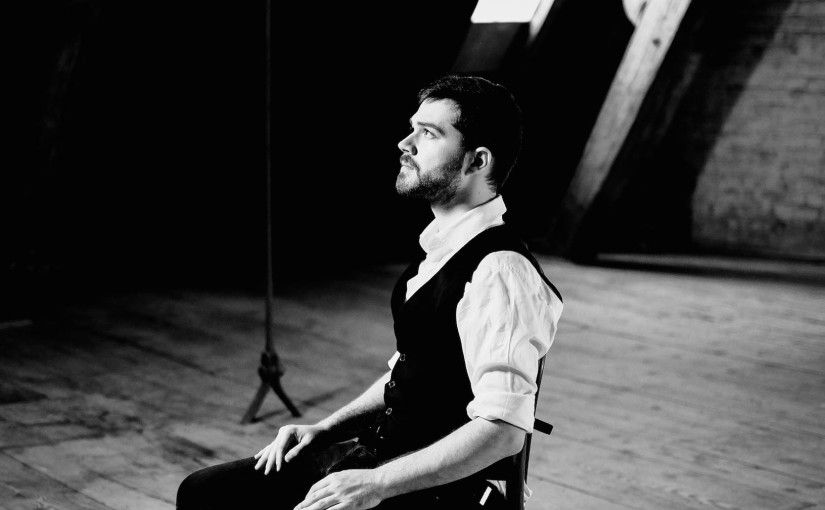This is the sixth installment in a series of interviews with the Kolapse remixers. Cedric Theys, who already contributed an interview with Lärmheim to the project, talks to graphic designer Ritxi Ostáriz.
How did Kola’s artwork come about? Was it based on the music or did it exist before the music?
It was made originally for the album. In that time I worked mainly in black and white and with geometric shapes. I was starting to get bored with my own style. It was so great that Tobias asked me for something with an “ethnic or tropical” feel (I don’t know if these were the actual terms) [Edit Tobias: I think “tropical” was indeed a word I used.]. So, probably for the first time, I decided to try something more organic, fewer angles and circles.

What techniques did you use? Is it more of a digital creation or does it come from drawing or photography?
It combines both. I won’t reveal the whole recipe of the artboard but I can say it all started with the photography of a pineapple. I think it’s the first time I reveal this secret!
You have a very unique style for album artwork. Where do you get your inspiration from?
I honestly don’t think I have a specific style, though I have been said that many times. If you take a look at my whole portfolio of designs, you will find very different approaches. It would be hard for me to talk about where I get my inspiration from as there is no one single way of working. Every project has its own methodology.
You’ve worked extensively with Markus Reuter and with the Iapetus family. Are there other record labels and/or artists you work with a lot too?
Markus has been a key figure in my design career and he has trusted me and my skills many times. He is for sure the client I have worked on the most projects with. But there is also Vegard Tveitan ‘Ihsahn’ and Heidi Solberg Tveitan, from Mnemosyne Productions, who have commissioned me for many of their projects. In fact, they were my first client in the music scene. I am so proud and grateful for having had the chance to work for them.

What other design and creative work do you do?
Music design has only been one of my specializations. I have also worked as a motion graphic artist and as editorial designer for books and magazines. In the last five years I have worked full time for the brand consulting firm Saffron Consultants and I am currently a Senior Visual Designer at Fjord, a Service Design consulting company.
What are some of the things you are focusing on right now that you’ve never done before?
Good question! I am currently directing, writing and recording a weekly radio podcast about Anthropology, Ethnography and the History of Human Beliefs. I am having a lot of fun and having the chance to meet and interview a lot of great scholars, writers, journalists…
Download Kolapse for free, make sure to browse Ritxi’s online portfolio at ritxiostariz.com, and sign up for the a100ql newsletter where I share news, thoughts, essays and materials related to the blog once or twice per month.

